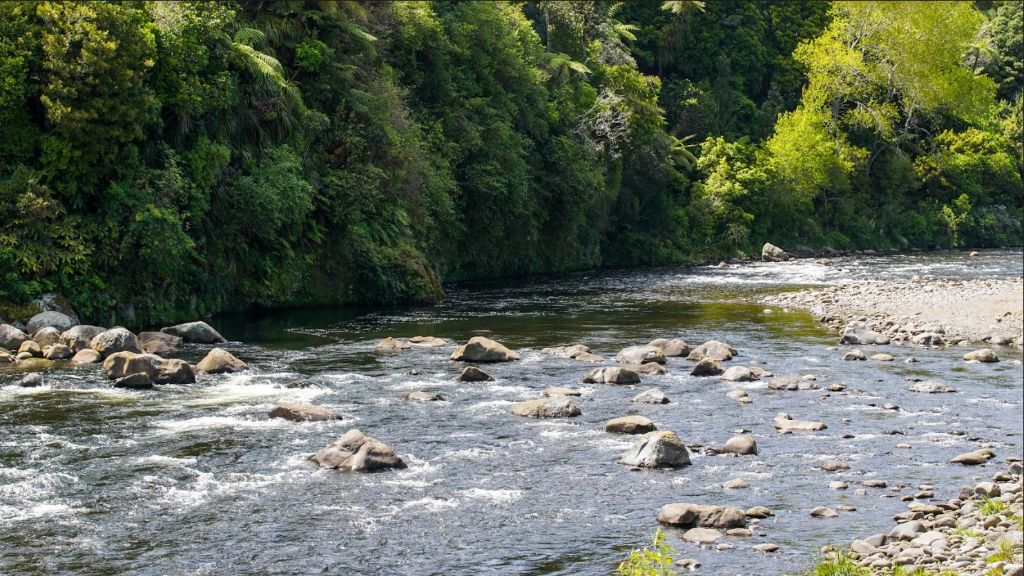Water Use Across New Plymouth District Takes A Dip Despite Hot Summer

New Plymouth District residential properties were less thirsty than usual during summer with a five per cent drop in water use for the first three months of the year, NPDC can confirm.
Three months of water restrictions ended on 31 March and when compared to same period last year, the amount of water saved would have filled nearly 73 Olympic swimming pools (182,000m3)
Ōkato area was the standout with water use down 15 per cent (7,465m3) from last summer.
NPDC Three Waters Manager Mark Hall says there are various reasons for the drop in water use during the driest time of the year.
“We’ve had the Wai Warrior messages go out to remind people about being careful with their water use during the time of year when it’s in highest demand. There’s also the effect of weather from year to year, and the growing influence of our leak detection programme through water meter installation.
“Between public education, infrastructure maintenance and the occasional spell of rain, we’ve all managed save a significant amount of water across the district during summer,” he says.
The average weekly water use by households during summer is between 10 and 20 percent higher than the yearly weekly average.
By the numbers
Volume of water use during summer 2024 in comparison to summer 2023:
- Entire district: down five per cent (3,290,000m3 vs 3,472,000m3 – equivalent of 72.8 Olympic swimming pools).
- Ōkato: down 15 per cent (41,500m3 vs 48,965m3 ).
- New Plymouth: down six per cent (3,003,000m3 vs 3,185,733m3).
- Inglewood: up 2.5 per cent (160,000m3 vs 156,600m3).
- Ōākura: up six per cent (86,100m3 vs 81,600m3).
Fast facts:
- NPDC has installed more than half of the 25,000 water meters at residential properties across the district, with several significant leaks detected and either fixed or in the process of being fixed.
- This is part of NPDC’s $248 million investment over the 10 years to 2031 to fix the district’s plumbing.
- New Plymouth District’s average water use per person per day dropped from 309 litres in 2017/18 to a low of 288L in 2020/21, before rising again to 300L in 2022/23.


 Gordon Campbell: On Why We Can’t Survive Two More Years Of This
Gordon Campbell: On Why We Can’t Survive Two More Years Of This Queenstown Lakes District Council: Top 10 Most Hazardous Items Found In QLDC’s Waste Facilities And Rubbish And Recycling Bins In 2024
Queenstown Lakes District Council: Top 10 Most Hazardous Items Found In QLDC’s Waste Facilities And Rubbish And Recycling Bins In 2024 NZ Government: Drive Safely This Summer
NZ Government: Drive Safely This Summer Northland Inc: Game-Changing Investment For Northland - Resilience Fund Allocates $250,000 To Health Simulation & Training Centre
Northland Inc: Game-Changing Investment For Northland - Resilience Fund Allocates $250,000 To Health Simulation & Training Centre Interchurch Bioethics Council: Church Bioethics Agencies Express Dismay at the Rushed Consultation Period for Submissions on the Gene Technology Bill
Interchurch Bioethics Council: Church Bioethics Agencies Express Dismay at the Rushed Consultation Period for Submissions on the Gene Technology Bill New Zealand Police: More Than $2.5m Worth Of Assets Restrained In Undeclared Tobacco Case
New Zealand Police: More Than $2.5m Worth Of Assets Restrained In Undeclared Tobacco Case SPCA: Survey Shows Government Lacks Mandate To Repeal Live Export Ban
SPCA: Survey Shows Government Lacks Mandate To Repeal Live Export Ban


